After talking about how much I enjoyed my first batch of hopped cider using Cascade hops, several readers suggested that I give a Citra hopped cider a shot.
Not knowing a lot about hops, or having much experience brewing with them, I figured it would either be the same or better.
Then I was I was sidetracked into researching hops which eventually lead me to Amazon buying hop rhizomes so I could grow some myself, but that’s going to be another article…
So, once I learned a little bit about how diverse and unique hops could be, I stopped at my local home brew shop and picked up some Citra hops. The man behind the counter reinforced the readers suggestion to hop the cider and my excitement grew.
Spoiler Alert: They were right! But keep on reading!
If you didn’t read about my first hopped cider and are wondering why someone would want to hop a cider, I’ll cover it briefly again.
When I talk about hopping a cider, I am referring to dry hopping, or adding hops directly to the fermenter only to soak, never boiled like beer recipes. This simple process avoids the strong bitter flavor that hops typically contribute and results in a variety of fruit and hoppy flavors with a really nice floral aroma.
A hopped cider also tastes sweeter without back sweetening while also aiding nice body and mouthfeel.
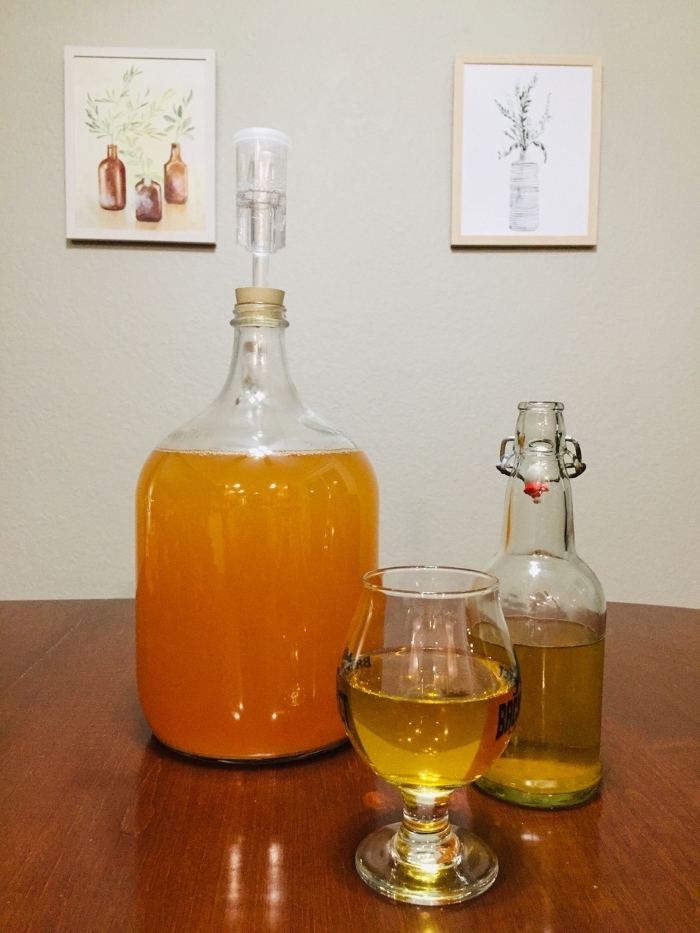
Citra Hopped Cider Ingredients
Juice Selection:
For this batch of cider, I used basic store bought pasteurized 100% apple juice with an original gravity of 1.046 SG. Of course, fresh pressed juice would be better but at this time of year, its the only juice available. Fresh pressed season is almost here!Hop Selection:
Citra hops, produced by YCH Hops, are known for their intense citrus, tropical and fruity aromas and flavors.
Yeast Selection:
I chose one of my favorite yeasts, Nottingham Ale Yeast, which finishes slightly above dry and adds notes of fruity flavors that compliment the cider and hops well.
Yeast Nutrient:
Yeast nutrient and energizer improves the health of the yeast which will produce finer tasting alcohol (fewer fusel alcohols ). Simply put, happy yeast makes better tasting cider!
When making a cider, yeast nutrient or DAP, is typically added in the beginning to increase the amount of dissolved nitrogen in the juice.
Hydrometer & ABV Info:
Original Gravity: 1.046 SG
Target Final Gravity: 1.002 SG
Expected ABV: 5.75%
Five Essential Pieces of Equipment





How to Make Citra Hopped Apple Cider:
If you are new to cider making, start by reviewing the basic cider making instructions found here. This standard cider will be our base.
- Clean and sanitize all equipment
- Take a hydrometer reading of the fresh cider
- Add yeast nutrient to the fermenter, check the label for dosage
- Pour the apple juice into the fermenter
- Pitch the yeast and attach the airlock
Fermentation:
My base cider finished fermenting in about two and a half weeks while at a temperature around 70F. Fermentation began strong until the cider reached about 1.014 SG and then it steadily slowed as it neared completion.
Sampling SG during is necessary to get a true gauge of the progress of fermentation. The time it takes a cider to ferment can very due to type of yeast, yeast health and temperature among other things so your process may be quicker or longer.
Adding the Citra Hops for Dry Hopping:
Once the cider finished fermenting, I racked it into a clean and sanitized fermenter so I could begin the dry hopping process.
While its not necessary to rack the cider at this time, I like to get the cider off of the lees so I can save the yeast before introducing hop debris.
To dry hop, I placed one ounce of Citra pellet hops into a sanitized hop bag and tossed it into the fermenter. Pretty simple!
The hop bag reduces the amount of sediment and which will make clearing the hops from the cider easier in the end.
How Long to Dry Hop Cider?
How long you dry hop depends on your personal taste and can be adjusted accordingly but I have read that dry hopping shouldn’t go much past two weeks.
For this batch, I allowed the cider to dry hop for about 5 days at ambient temperature, giving the fermenter a gentle swirl each day. Im not sure if the swirl helps, but I though of it as dipping a tea bag and seeing the tea seep into the water.
After 5 days I cold crashed the hopped cider for two additional days with the hop bag still in the fermenter. Cold crashing allows the remaining yeast, hop debris and any other particles to flocculate and drop to the bottom for easy removal.
Finishing the Dry Hopped Cider:
Once the cider had taken on the best of the hop flavors, and had been cold crashed, I removed the hop bag. The cider was then ready to be carbonated.
Since I have kegs, I racked the cider directly to my 5 gallon corny keg and charged it with CO2.
Final Results:
Well, this is one of the recipes that I will keep in my regular rotation for sure.
Even without any additional back sweeteners, acid adjustments or other additions, I really enjoyed it!
Next time I may add just a little, maybe a half can, of apple juice concentrate for some quick apple notes and sweetness but it really drinks fine as it is!
Citra Hopped Hard Cider Recipe
Equipment
Materials
- 5 gal Apple Cider
- 1 pack Nottingham Ale Yeast
- 1 tsp Yeast Nutrient
- 1 oz Citra Hops
Instructions
- Clean and sanitize all cider making equipment before starting.
- Pour the Apple juice into the fermenting vessel.
- Take a hydrometer reading to measure the gravity and record.
- Add yeast nutrient if desired.
- Pour the yeast into the fermenter.
- Close the fermenter and install an airlock filled with sanitizer.
- Allow the cider to ferment in a cool and dark place for about two weeks.
- Pour the hops into a hop bag and place the hop bag into the fermenter for about a week.
- Cold crash, rack and bottle.
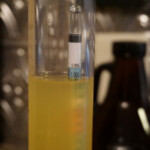
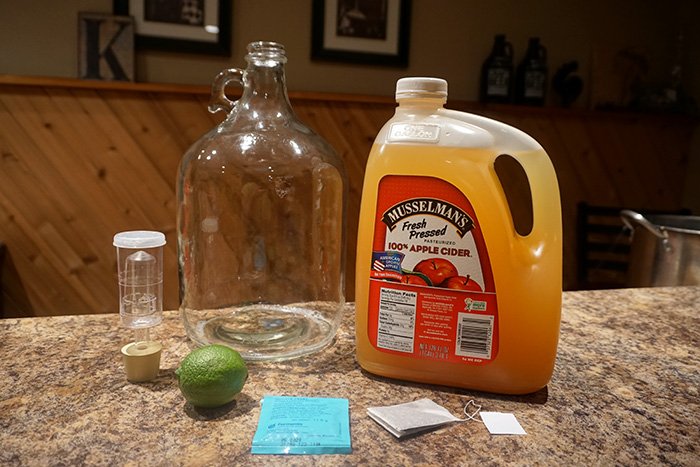
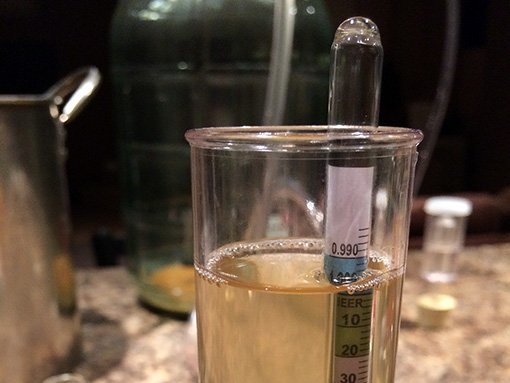
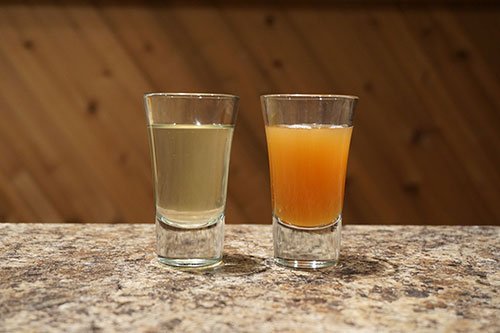
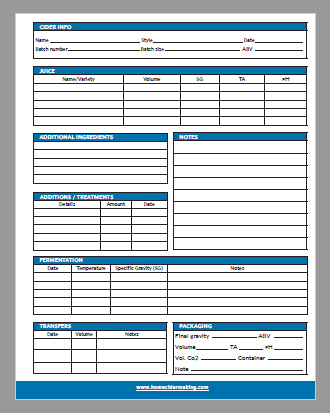
Good info on the hops. I had no idea how to add citrus notes without adding citrus oils or skins. I’ll try it!
Dry hooping can also be done in mesh bags or in hop cans in the keg prior to carbing if you’re trying to reuse your yeast. Citra is a great hop for cider, as is Mosaic. I use cryogenic hops of both varieties in ciders. In cryo you get more hop for the amount used as less dry hop loss. ~Troy in Nor Cal